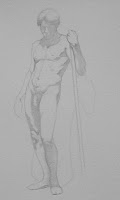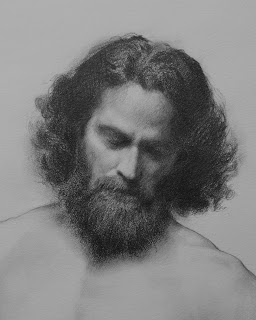Saturday, September 10, 2011
How to Become a Master
Wednesday, September 7, 2011





Figure Drawing - Boston
Drawing the human figure is one of the most challenging tasks an artist can confront. All human faces are composed from the same limited number of features yet, we see each person as a recognizable individual. Human instinct makes us hard wired to perceive slight differences in human physiognomy. This makes the task of drawing the figure difficult.
At the Academy we teach a step-by-step method that helps students convincingly draw the human figure. Our students learn to accurately depict a figure’s proportion and gesture with a few basic lines in the early stage of their drawing (gestural construct). Once the proportions are correct these basic lines are broken down into a general description of the major forms of the body; torso, arms, legs etc. including a general indication of the light and shadow pattern (completed construct). Once the completed construct is accurate we articulate the anatomy; describing the musculature and the way the shadow describes these forms. The final stage of the drawing is to fill in the shadow shape with a general value. This helps us to evaluate our drawing as a large light and shadow pattern (articulated construct).
This figure drawing demonstration prepared by Emmy De Musis shows the evolution of a figure study from the basic construct through the articulated construct. This demo shows what a student works on when they attend figure drawing classes at the Academy of Realist Art, Boston.
New Figure Drawing Classes Soon!
Thursday, 6-9 p.m. Sept. 29th – Nov. 17th Cost $300
Saturday, 10-1 p.m. Oct. 1st – Nov. 19th Cost $300
Thursday, September 1, 2011

Portrait Drawing – Instructor Brian MacNeil
Saturdays Oct. 1 – Nov. 19 cost $300

